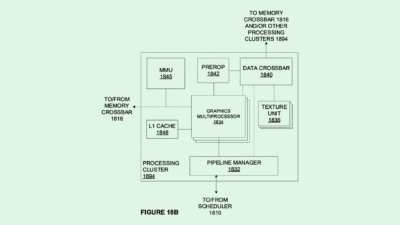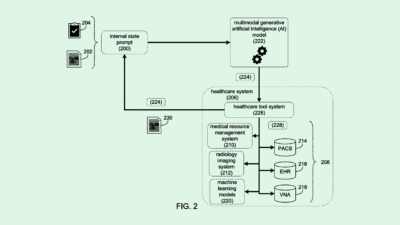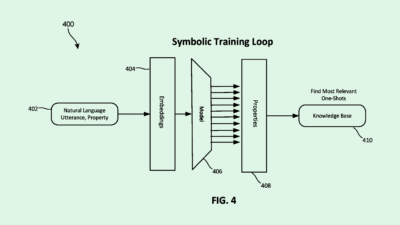Don’t Know Where to Start with AI? Stay Flexible.
Nearly every facet of the traditional tech stack is in flux.”

Sign up to get cutting-edge insights and deep dives into innovation and technology trends impacting CIOs and IT leaders.
With AI constantly evolving, it’s hard to know whether your enterprise is approaching it the right way.
Spending tons of money to bring the tech into your organization without a proper plan is a surefire way to blow through your tech budget with little return to show for it. With traditional tech stacks in constant flux, change management is necessary, Jennifer Manry, head of corporate systems and technology at financial services firm Vanguard, told CIO Upside.
“Providing a safe sandbox where employees feel confident and comfortable in experimenting will be key,” said Manry. “And the ideas from those lived experiences will probably be the source of some of the biggest productivity gains and innovation from this emerging technology.”
Manry sat down with CIO Upside to discuss how Vanguard approaches AI, the challenges of adaptability, and the importance of tracking success with tech integrations. This interview has been lightly edited for brevity and clarity.
Broadly, how does Vanguard leverage generative AI?
We bring that client-centric lens to our approach to AI. We are focused on leveraging AI to support client needs directly — like providing personalized advice, enhancing client experiences, and improving access to products and services — and to empower our crew (employees) to better serve clients by offloading administrative tasks and positioning them to instead focus on strategic, high-value tasks … Recently, we’ve launched our first client-facing gen AI capability that equips financial advisors with efficient and personalized content for client communications.
We’ve also begun to roll out AI at scale internally by delivering high-impact gen AI tools that are helping crew be more productive. We’re focused on the power of generative AI across three high-opportunity areas – knowledge management, content creation, and coding and software development – to boost operational efficiencies and create even more value that we can continue to return to our clients.
In knowledge management, we are using generative AI to help our crew find, understand, and synthesize information more effectively. We are also leveraging generative AI to streamline writing and editing, allowing our crew to focus on complex problem-solving. Additionally, we are piloting generative AI in code generation and software development, enabling our developers to see significant productivity benefits.
Since deploying AI across your organization, what lessons have you learned about integrating AI at scale? What advice do you have for enterprises that are considering their own AI strategies?
AI learning and fluency are crucial for both tech and business teams. It’s not just a tech agenda. AI, especially generative AI, must be championed by the business to make a real impact. Using AI for its own sake won’t work. The key is to rethink and reimagine how work is accomplished with AI. It’s essential to ensure that we don’t simply apply generative AI to existing processes, but rather spend the time to revamp them to fully realize the value of these technologies.
Change management is crucial for large-scale adoption. The “if I build it, they will come” mentality simply won’t cut it. It’s essential to actively engage and support employees throughout the transition to ensure they are onboard and equipped to embrace a new way of working. For enterprises considering their own AI strategies and roll-outs, it’s not just about top-down transformative programs. The strategy needs to be bottom up as well, giving frontline practitioners the opportunity to surface great ideas, impactful opportunities, and critical needs.
An effective strategy should include both. Having just one or the other runs the risk of leaving out key considerations including practical use cases from employees, or long-term strategic alignment with business objectives. It’s about aligning high-level vision with insights from the entire employee base, ensuring every team member is empowered to contribute to the collective success. Practically, this looks like creating a mechanism for frontline employees to share their ideas and feedback, and having a team responsible for evaluating and surfacing great ideas to decision makers. At the same time, senior leaders can focus on how genAI can enable long-term success and transformation.
Did Vanguard face any challenges in rolling out this tech?
We’re constantly experimenting with cutting-edge technology, which allows for us to anticipate major trends and also ensures we have a head start on anticipating early-stage challenges. Picking a future-proof tech stack that can seamlessly integrate new technologies as they mature is a challenge. It requires a strategic approach that balances immediate needs with long-term flexibility. We continue to ensure that our tech stack is modular and adaptable, allowing us to plug and play new technologies as they become available and proven. This is crucial to staying competitive and leveraging the full potential of AI without getting locked into outdated solutions. Every platform provider is embedding AI into their products, every hyperscaler is integrating AI into their offerings, and new vertical AI players are emerging almost daily. Nearly every facet of the traditional tech stack is in flux as this space continues to evolve.
How do you measure success of AI integrations at Vanguard?
Each of our AI projects have a specific goal, whether it’s increasing productivity, reducing expenses, scaling processes beyond current human limitations, de-risking operations, or enhancing customer experiences. Without a clear goal, they would remain mere experiments. We use both quantitative and qualitative methods to measure the impact of data.
Quantitatively, we employ a model to evaluate the data return on investment – net present value – by comparing the measurable effects of our new models or capabilities against a control group. This NPV model helps us clearly communicate the incremental value we add to the organization. Additionally, we complement this data-driven approach with qualitative insights, including anecdotal evidence, productivity metrics, and feedback from partners.
Does agentic AI play a role in the company’s current or future AI strategy?
Absolutely, and we are already experimenting with these advancements. We see this as an evolution of automation capabilities into something more dynamic, conversational, and context-aware. The potential for agentic systems to carry out tasks across various systems and collaborate with humans in a more natural and intelligent way is immense. By using agents, we can remove friction, handle repetitive work, and free up our teams to focus on higher-value tasks.
We have already seen success with automation, and this is a natural next step. Our focus will be on agents that can orchestrate processes, navigate systems conversationally, and support decision-making — essentially acting as intelligent collaborators. For us, this is about enabling scale and enhancing human capabilities, reducing friction, and unlocking new efficiencies.
How do you envision the landscape of AI changing in the coming years, both internally at Vanguard and broadly?
Right now, there is a tremendous amount of experimentation happening everywhere, both among platform providers and enterprise users. I believe we will start to see more patterns emerge, highlighting where this technology scales the best and produces the biggest impact.
We will also get more sophisticated in our use of models. While foundational models have opened many doors, we will start to see more targeted use of small language models that are fit for purpose. We will augment our strategies from a one-size-fits-all approach of model use, to a combination of large language models and domain-tuned models to accomplish specific tasks.
The consumerization of this technology is going to make people more comfortable with collaborating in human-machine interactions. As people become more familiar with these tools in their personal lives, they will bring those expectations to work. This shift will unlock the next wave of creative, high-impact applications. The combination of increased digital fluency and comfort with the tools is going to be a huge unlock for businesses, driving innovation and efficiency.











